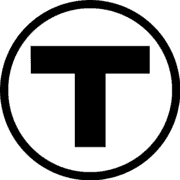So here's a crazy transit pitch that I realized this morning has been tossed around but never really examined: build a second LRT tunnel between Back Bay and Boston University. Such a tunnel (connected at the eastern end to a subway under Marginal Rd, with connections to the Pleasant Street tunnel and the Seaport) would significantly increase capacity on the western end of the network, enabling new branches to the Grand Junction, Harvard, and a reactivated A Line (via West Station) to avoid capacity constraints in the Central Subway altogether.
(The aforementioned subway under Marginal Rd, which also would serve the Huntington branches, would then become a pinchpoint, but if needed that could potentially be remedied with a double-stack subway to enable quad-tracking to Shawmut Ave, after which the split off to the Pleasant St tunnel will relieve pressure.)
I am not sure this is feasible; there are several sections, each with their own challenges.
Back Bay Station to Dalton Street -- going under the Pru
As far as I know, the only path through here has been carved out by the Mass Pike and the B&A railroad tracks. So if this is going to work, I think it would require a subway under the Pike itself. I have no idea how feasible this would be. Also note that a flying junction would be needed around Exeter St to hook in the Huntington branches. Also note, as always, that this is landfill.
Dalton Street to Charlesgate East
A couple of considerations here. First, a decision would need to be made about whether and how to interface with the Hynes Convention Center station. Since our LRT tracks would likely be on the north side of the Pike anyway, it might be feasible to veer slightly north away from the Pike to connect to the station. Also note that in this pocket we are actually
not on landfill anymore -- this was the "Gravelly Point" peninsula.
Then you have a choice -- travel via Kenmore, or via Lansdowne?
Charlesgate East to Kenmore
Yeah, I have no idea how feasible it would be to widen the S-curve under Charlesgate to add an additional 2 tracks.
For Kenmore Station itself, probably you'd want to look at a second level below the current station, and futureproof it to interface with a Blue Line extension; the upper level supports 4 tracks, so you're okay width-wise from a footprint perspective.
Make sure you add crossovers or the like to support short-turns (ideally from both directions, but especially from the west).
Kenmore to BU Bridge -- a new subway under Commonwealth
Extending the subway under Comm Ave has been an idea for over 100 years. Comm Ave itself is extremely wide, well over 90 feet between sidewalks, which should be more than enough for a quad-track subway -- two tracks to Copley and two tracks to Back Bay. Arrange them right, and you might even avoid a flying junction at BU Bridge -- just put your Back Bay tracks on the northern half of the quad. (Of course, ideally you can swing a flying junction to enable a WWEE track layout with shared center platforms for each direction, to make waiting for the right train easier.)
Once at the BU Bridge, you can branch off to West Station and Grand Junction like we've been discussing for years. (
For example, here.)
Charlesgate East to BU Bridge via Lansdowne
I think this stretch is relatively homogenous. And I think you basically have three choices:
1) Subway under the Pike (if you can with the landfill, and also dealing with closing half the Pike during construction and also with ducking under the Beacon St Subway)
2) Claiming lanes on the Pike -- would basically entail grabbing three lanes, plus a little more for a stop at Lansdowne. The Pike is 8 lanes wide, plus a breakdown lane, for most of this stretch, so it's not necessarily impossible, but....
3) Running over the Pike at street-level and/or with overpasses on cross streets; this will cost you at least partial air rights, plus will be expensive, plus would introduce some challenges with grade-crossings. Light rail plays nicer with traffic lights than other rail, but still less than ideal
An alignment via Lansdowne would have a couple of station-siting-related challenges:
1) Difficult to add useful connection to either Kenmore or to the Lansdowne commuter rail station
2) Difficult to create a usable transfer station at Boston University
If I were king...
I would put the Pike on a road diet under the Pru, reclaim 25 feet for LRT track, hook into Hynes station, then expand the tunnel under Charlesgate to support 4 tracks, add a second level beneath Kenmore and then extend into a 4-track subway under Commonwealth.
~~~
So, is there any other way under the Pru? Can the S-curve be expanded to 4 tracks? Should the Pike be put on a diet?
www.mbta.com

